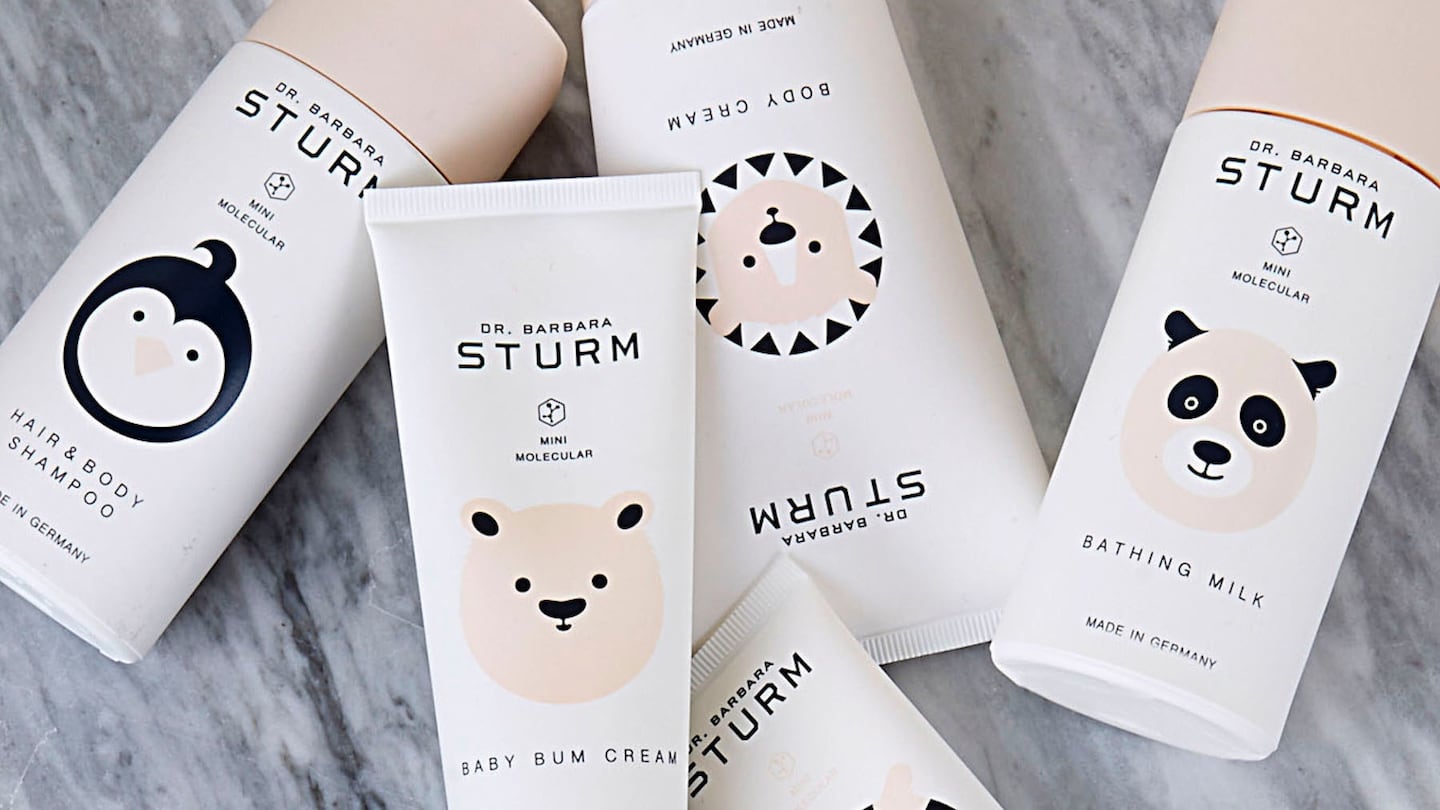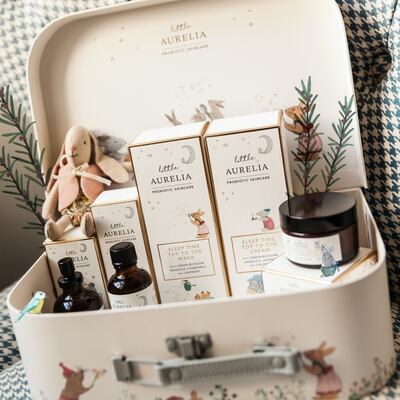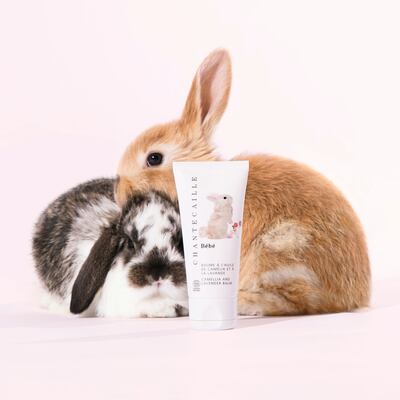
The Business of Fashion
Agenda-setting intelligence, analysis and advice for the global fashion community.

Agenda-setting intelligence, analysis and advice for the global fashion community.

LONDON, United Kingdom — Achieving baby-soft skin is an ideal beauty brands have put forth for generations. Brands sell serums and lotions galore on the promise they will keep the wrinkles at bay. But these days, adults looking for an anti-ageing fix aren't the only ones that brands are pitching their luxury creams to. The new target consumer? Babies.
"It" skincare doctor Barbara Sturm, for example, launched a full line of baby products in 2018. It doesn't come cheap: prices reach £50 ($65) for a 50ml face cream. But it's been picked up by the likes of Nordstrom, Net-a-Porter, Space NK and Harrods.
It’s a niche market — but one with big potential. While the $3.6 billion global baby and child skincare market is dwarfed by its adult counterpart, it grew almost 9 percent last year, according to Euromonitor. Premium products make up roughly 45 percent of the market. Premium skincare is driving growth in the baby personal care sector, said Alex Fisher, associate director of beauty and personal care at Mintel. Indeed, three in four parents prefer to spend more money on personal care products for their children than for themselves, according to Mintel data.
Customers are looking for a luxury product for themselves, and want to reciprocate this in purchases for their children.
Now, a number of brands are offering luxury versions of staples like body cream and face cream, or shampoo and body wash, as well as more indulgent purchases like bath ointments, sleep sprays and even alcohol-free eau de parfums.
ADVERTISEMENT
Jessica Alba helped kick off the trend in 2011 with her affordable, wellness-focused kids and baby brand Honest Company.

Little Aurelia products | Source: Courtesy
But the last few years have seen a number of prestige beauty names entering the space, such as Aurelia Probiotic Skincare and Chantecaille. They’re betting ingredient-conscious shoppers will treat their little ones to the same high-end products they use on themselves.
“A lot of our customers who buy through high-end retail partners such as Net-a-Porter and Liberty are looking for a luxury product for themselves, and want to reciprocate this in purchases for their children,” said Claire Vero, founder of Aurelia Probiotic Skincare. In June 2017 the brand launched a kids and baby line, Little Aurelia, which includes vegan products such as bath and massage oil (£28) and body cream (£26).
Millennials, now the largest group of new parents, are the prime customer. They are having fewer children on average and many take a “quality over quantity” approach to what they buy for kids, whether it’s Huggies’ plant-based premium nappies or biodegradable teether toys. The youngest generation of parents also came of age alongside the wellness movement, and plenty of Millennial mothers are keen to avoid ingredients they believe are toxic or unnecessary, impacting everything from the food they eat to the products they put on their children's skin.
It’s a phenomenon made for luxury beauty brands, which tailor their pitches to emphasise safe and natural ingredients. They justify hefty price tags by claiming to use high-quality ingredients in greater concentrations than their mass counterparts. Many have a celebrity fan-base — Nicky Hilton swears by Sturm’s line — while slick packaging and careful product curation make lines feel elevated.
“It’s mirroring what’s happening in skincare in general,” Clare Varga, head of beauty at WGSN, said. “The rise of the skin-tellectual market and also clean beauty and organic products, that’s totally embedded in the beauty consumer’s culture now. As they become parents they’re extending this down to their children as well.”

Chantecaille Bébé balm | Source: Courtesy
ADVERTISEMENT
Like in adult skincare, a doctor’s seal of approval or science-backed product formula increases product appeal, said Mintel’s Fisher. For Olivia Chantecaille, Chantecaille’s creative director who founded its Bébé line in 2016, getting her new product line officially certified by COSMOS, an independent European body that demonstrates a product meets the minimum requirements to be considered natural and organic, was a must as it would give parents “a sense of confidence and trust in the product,” she said.
There are baby-focused players in the market, like Minois Paris and Vienna-based Alma Babycare. Dermatologist-backed start-up Evereden launched earlier this year. But established names have the advantage of an existing customer base that already has a strong level of brand trust.
Space NK, which recently began stocking kids and baby products from Dr Barbara Sturm, Aurelia and Chantecaille, has seen fans of those brands’ adult lines become early adopters of the baby products.
“The idea that they can have products that not only they personally feel comfortable with, but then they can use on the rest of their family, is a pretty easy transition for them,” said Margaret Mitchell, the retailer’s chief merchandising officer. Many also buy these products as gifts, she said.
It's definitely raising interest, even if the price point is quite high.
Beyond skincare, there are plenty more opportunities to be explored. Aurelia is developing probiotic and wellbeing supplements for older children. Barbara Sturm will introduce spa treatments for kids — including a “Baby Sturm Massage” and “Mini Sturm Facial” — at the brands’ upcoming pop-up at The Murray in Hong Kong, a key market for the brand’s baby products.
And then there’s the new mum herself. Space NK’s Mitchell sees pregnancy beauty products as an underserved area that’s in high demand.
“[During] pregnancy or during breastfeeding, the customer’s very conscious of what she’s using,” she said. “We definitely have lots of requests for that in our stores.”
It’s still early days for the baby and kids premium skincare category. Big retailers have only really started shoring up offerings in the last year or so. But for brands, the sector provides an additional avenue of growth — and a good marketing tool — as the fight for shelf space becomes tougher than ever in an increasingly crowded beauty landscape.
ADVERTISEMENT
“It’s a nice side product,” said Sturm. “It’s of course not our best-selling SKUs, but it’s definitely raising interest, even if the price point is quite high.”
Related Articles:
[ Tracking the Rise of ‘Clean’ BeautyOpens in new window ]
[ How Millennial Culture Is Driving the Luxury Kidswear MarketOpens in new window ]
L'Oréal reported a 9.4 percent rise in first quarter sales on a like-for-like basis on Thursday, beating expectations and easing concerns about a slowdown in the two biggest beauty markets; the United States and China.
The founder, who was ousted and recently came back to the line as CEO, will regain control of the company.
Puig and its founding family plan to sell Class B shares at €22 to €24.50 each, the Barcelona-based company said Thursday in a filing with the Spanish securities regulator.
Beauty labels hope to court the concert set for both brand awareness and trendsetting opportunities.